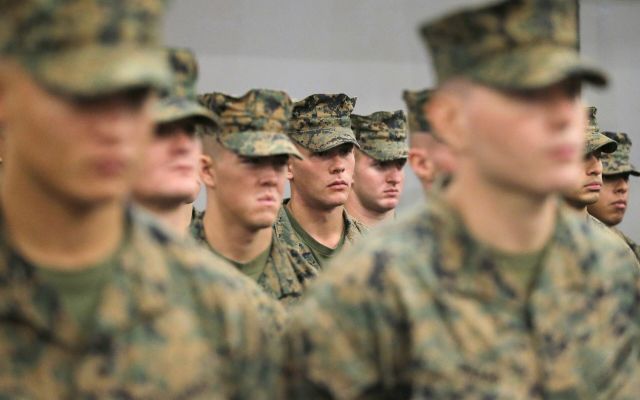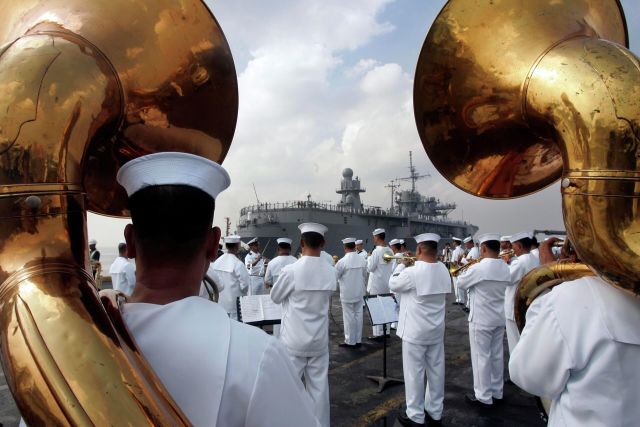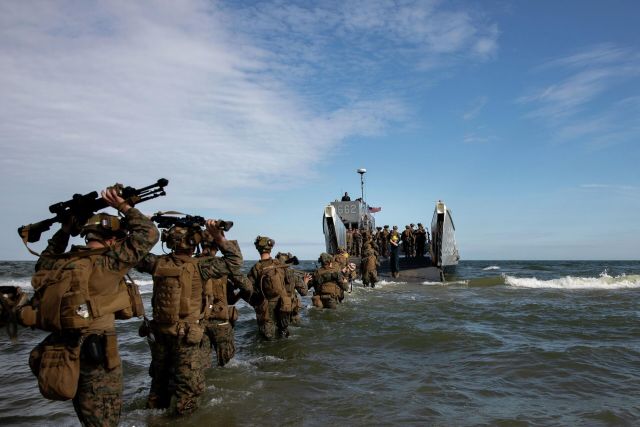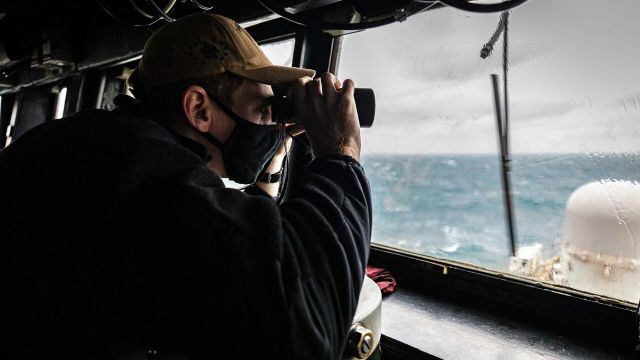MOSCOW, Oct 7 — RIA Novosti, Andrey Kotz. The US military has found a new way to confront China. The Pentagon is creating a special tactical group that will combine the forces of the Navy and the Marine Corps for operations in the Pacific. How this will change the situation in the region — in the material of RIA Novosti.
Interspecific group
The United States, actively supporting Ukraine, does not forget about its main geopolitical rival — China. The White House is putting pressure on Beijing by both economic and military means. This week, Washington imposed further restrictions against the strategic industry of China, banning the export of semiconductors and chips for high-tech memory chips and quantum computers.
At the same time, the Americans continue to threaten terrible punishments if the PRC invades Taiwan.
Threats are backed up by deeds. The Pentagon announced the creation of Task Force 76/3 (Task Force 76/3) in the Asia-Pacific region based on the Expeditionary Strike Group 7 (Expeditionary Strike Group 7) of the US Navy and the 3rd Marine Expeditionary Brigade.

US Marines during construction Image Source: © AP Photo / Pool/ Jason Reed
"Combining the capabilities of the two Armed Forces has a special meaning for us in this region," said Rear Admiral Derek Trink, commander of Tactical Group 76/3. — The Navy and Marines have always operated side by side, but before they had different headquarters. Now the decision-making time will be significantly reduced, effective interaction between the Navy and Marines will be established, the landing of troops on the coast will be accelerated and supplies will be facilitated."
Six thousand bayonets
Structurally, Tactical Group 76/3 is subordinate to the command of the US Seventh Fleet, which is on duty in the Western Pacific. Both Strike Group 7 and the 3rd Marine Expeditionary Brigade are based in Japan. The officers of the two formations know each other well: they participated in various naval operations together and established cooperation. The Pentagon is confident that there will be no problems with the transition to a single command.
Up to a dozen and a half pennants will be allocated to the fighters: amphibious helicopter carriers, dock ships, supply vessels. Several helicopter squadrons, naval aviation fighters, and tiltrotor planes will support the actions of Task Force 76/3. The flagship will be the control ship USS Blue Ridge, assigned to the Japanese port of Yokosuka.
Since the tactical group does not have its own cruisers, destroyers and submarines, it will be covered by the forces of the Seventh Fleet.

Meeting of the sailors of the US Seventh Fleet in the port of Manila Image Source: © AP Photo / Pat Roque
The amphibious potential of the new formation is up to six thousand marines with weapons and military equipment. It is expected that they will be fully prepared by 2024. And then, according to the military, they will be able to carry out a "full range of maritime operations" — from disaster relief to high-intensity conflicts.
Lock up in ports
The Pentagon does not explain why they are creating a special group right now. However, analysts have no doubt that this is a response to China — by all parameters, Task Force 76 is aimed at actions in the western Pacific.
The potential of the PLA here is only slightly inferior to the American one. China already has more ships than the United States. There are long—range anti-ship missiles, including hypersonic, a developed network of airfields and numerous aircraft.
Washington fears that the PLA will create a so-called access exclusion zone (Anti—Access/Area Denial, A2/AD) over the Taiwan Strait - an area reliably covered by air defense and coastal missile systems, where Western aircraft and ships will suffer unjustifiably high losses in the event of a conflict.
According to the Pentagon's plan, the ground forces will have to crack this fortress. To do this, a multi-Domain Task Force (MDTF) was formed in the Pacific Ocean last year.

US Marines during the joint NATO exercise BALTOPS 22 in Ustka, Poland Image Source: © Photo : U.S. Marine Corps / Cpl. Yvonna Guyette
The composition and strength of this unit varies depending on the combat mission and conditions. The main striking force is high—precision missiles, from HIMARS MLRS to advanced hypersonic. Special attention is paid to intelligence, electronic warfare, communications. There are also cybersecurity specialists.
In the event of a war, MDTF will use its full potential to reduce the effectiveness of "access exclusion zones". And it will also destroy key objects of the enemy's military infrastructure.
However, plans to contain China have encountered unexpected difficulties. According to Colonel Jason Charland, a specialist at the army headquarters in the Pentagon, the use of MDTF against China makes sense only if missile weapons are installed nearby - on the first island chain, which includes the Philippines, Korea and Japan. Now the nearest military base is on Guam, two thousand kilometers away. Charland noted that while Seoul, Tokyo and Manila are not eager to deploy American strike complexes.
Willingness to challenge
Of course, China is closely monitoring the activity of the United States and its allies in the Asia-Pacific region. At the end of September, Chinese President Xi Jinping said that the People's Liberation Army "should focus on preparing to participate in real hostilities."
"This is a sign that China is ready to repel military threats, which are certainly real," said Evgeny Zaitsev, head of the Center for Russian—Chinese Studies at Moscow State University. — First of all, from the AUKUS block created last year, uniting Australia, the UK and the USA. Beijing accepts Washington's challenge and is going to take certain measures to increase the mobilization readiness of the PLA. This is a logical and reasonable step."
So far there are no signs of an imminent armed conflict in the region. The parties are looking at each other. Although, for example, Taiwan's Defense Minister Qiu Guozheng accused China of preparing for war. According to him, the invasion may begin in 2025. The United States will not stand aside — as the Americans have repeatedly confirmed. And this threatens a global conflict.

